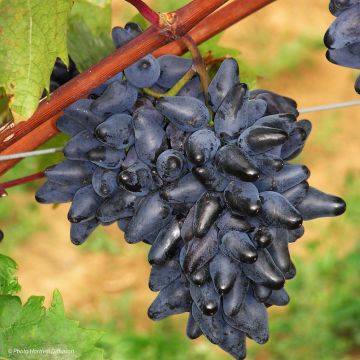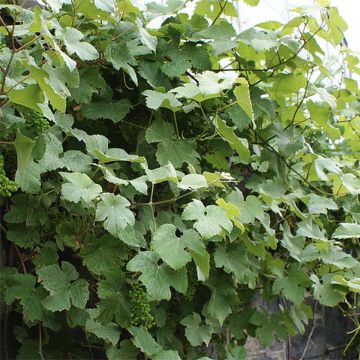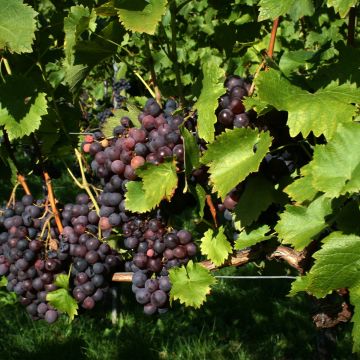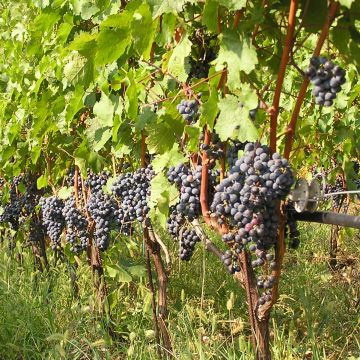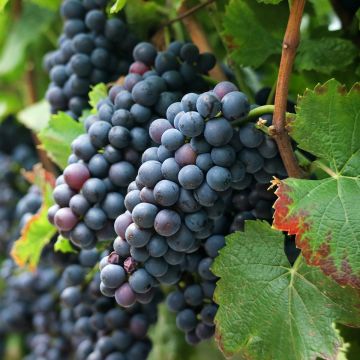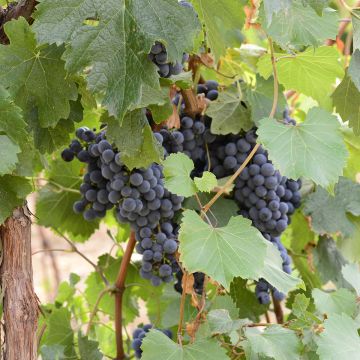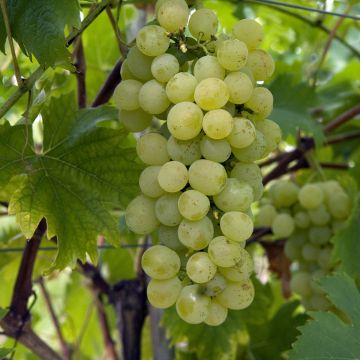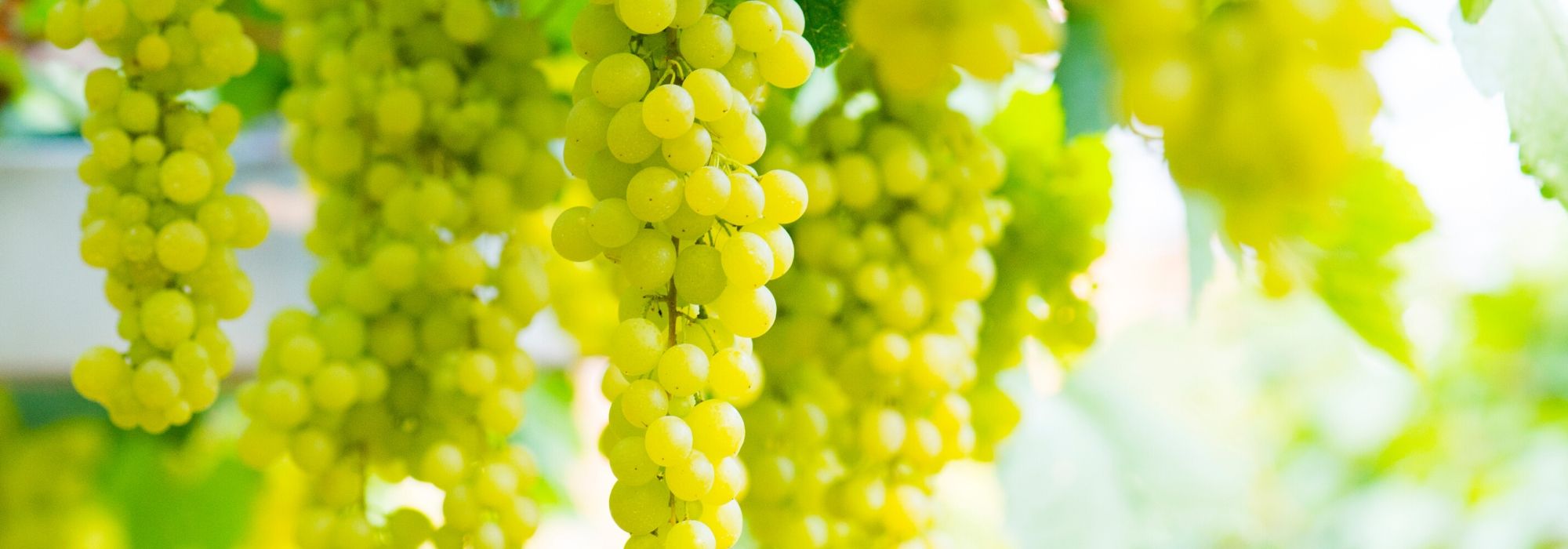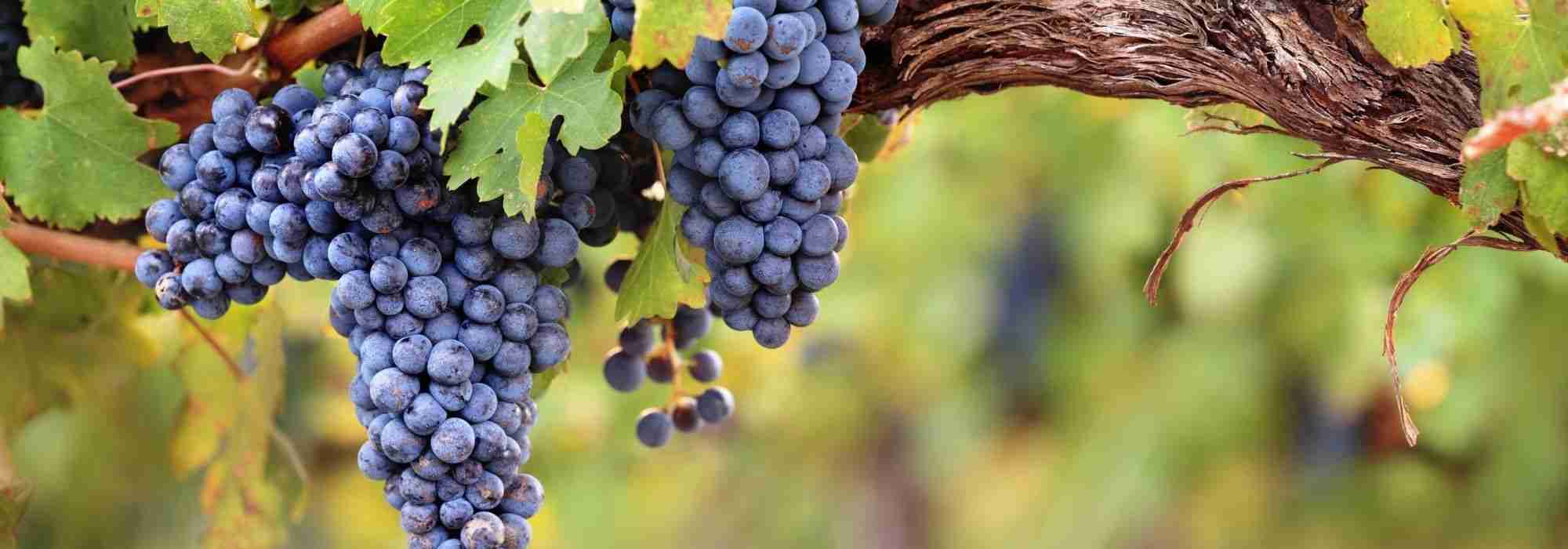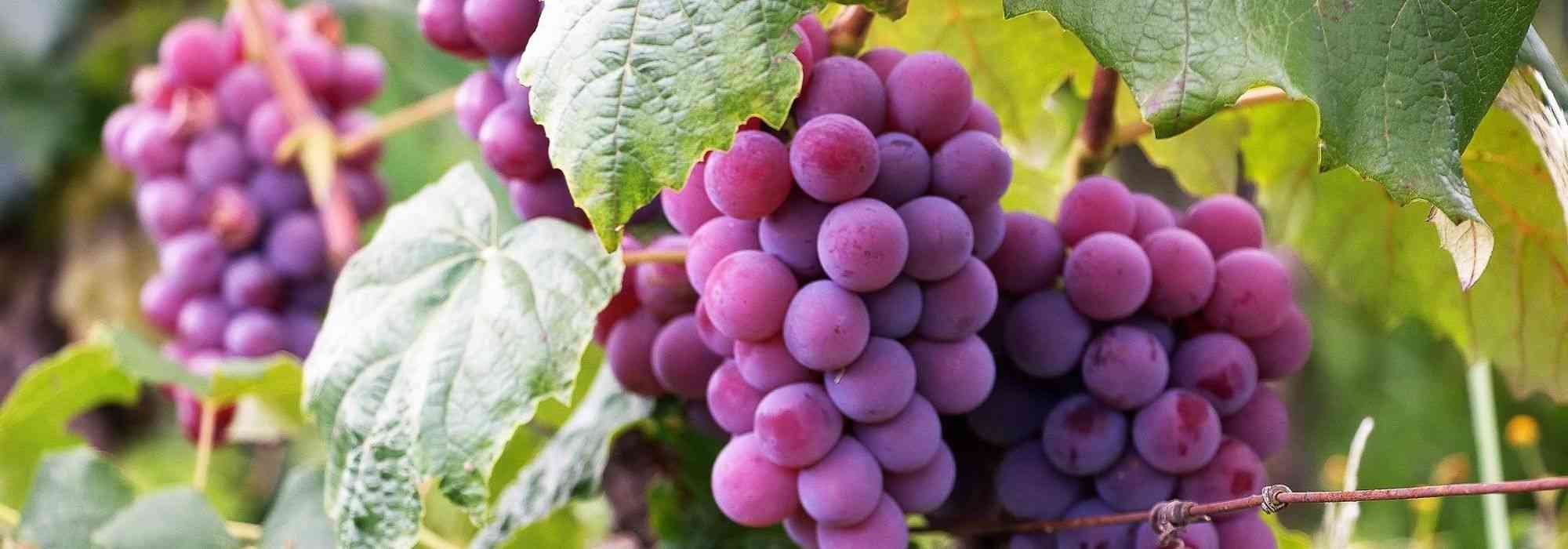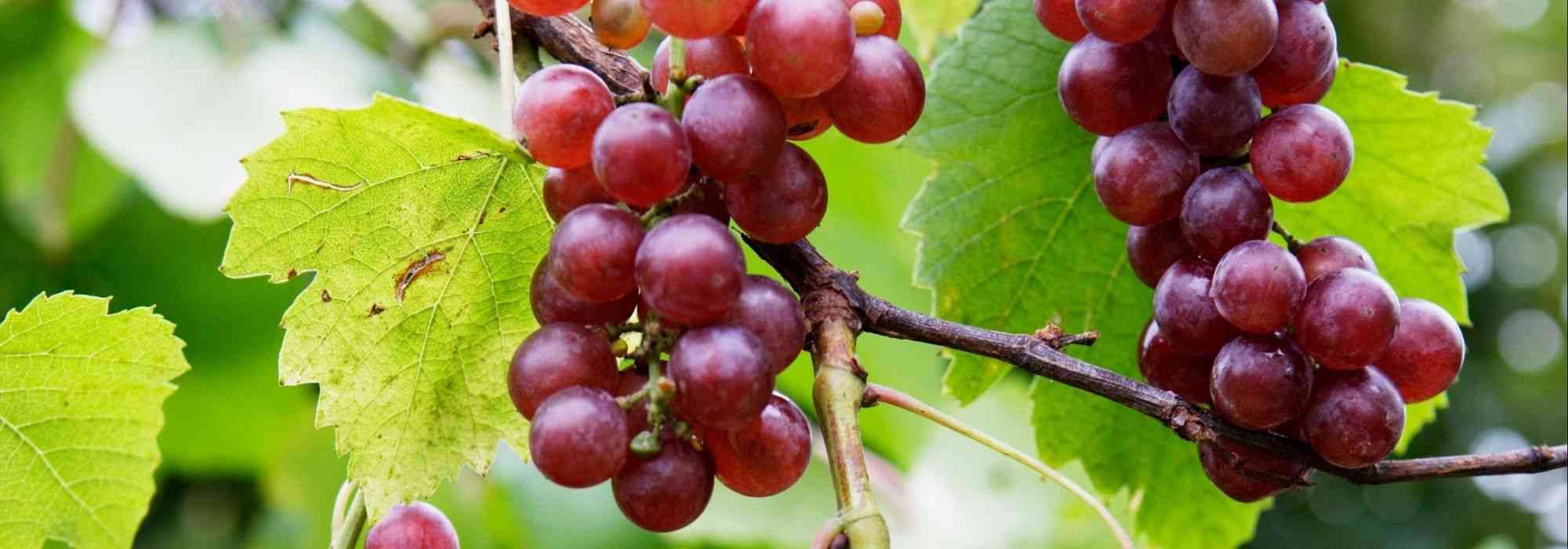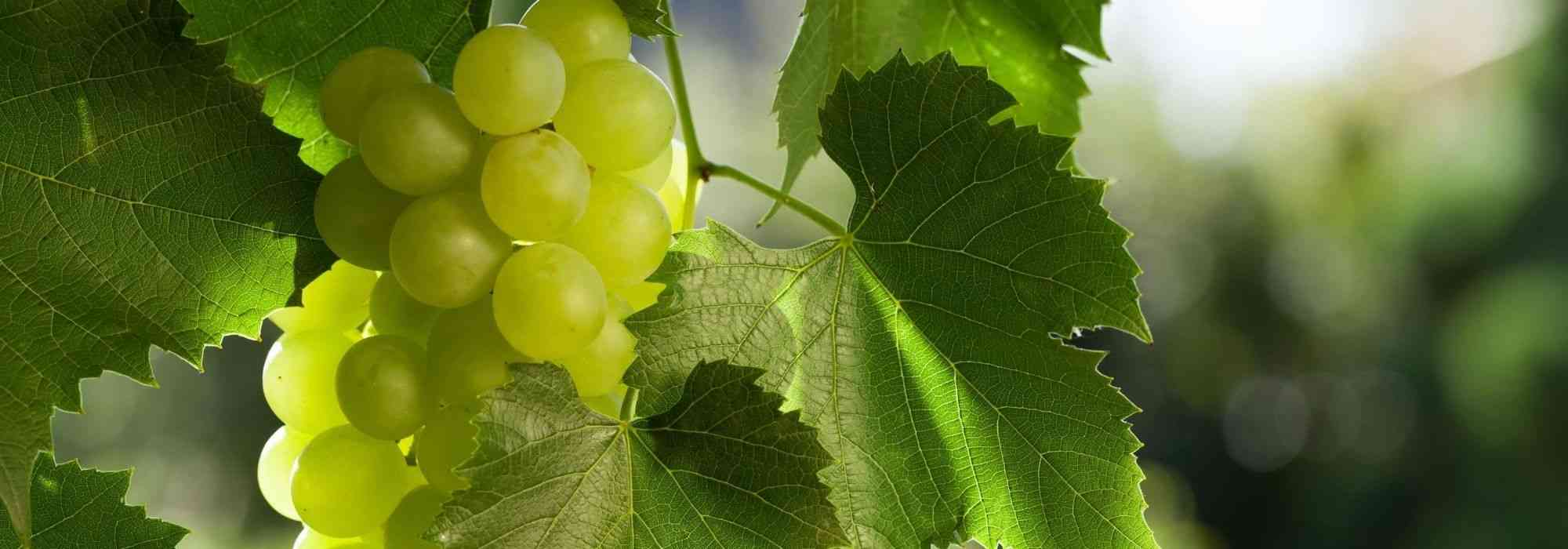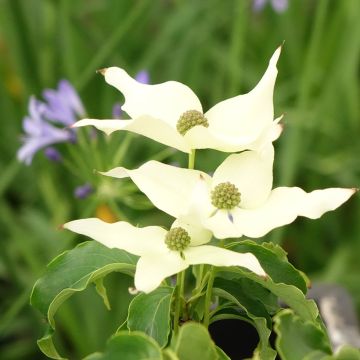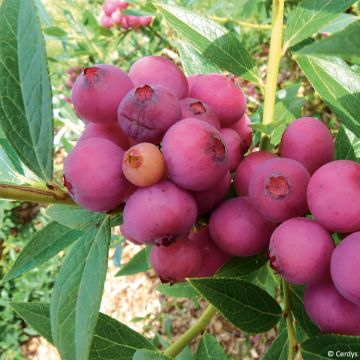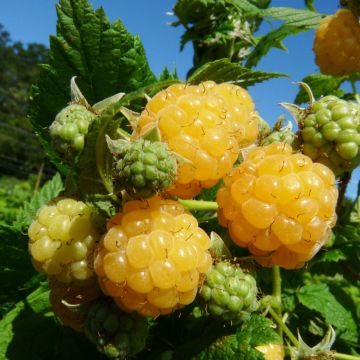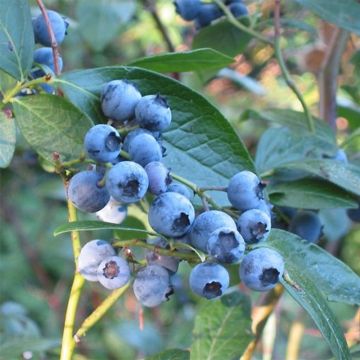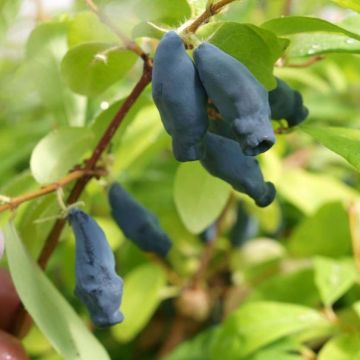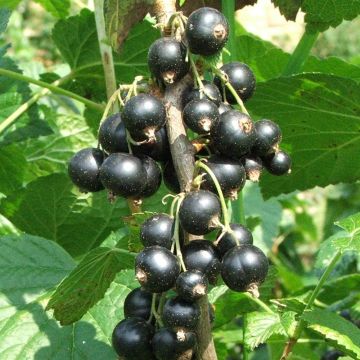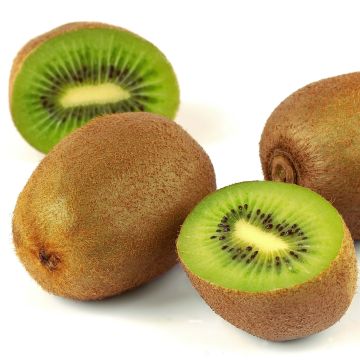

Vitis vinifera Vermentino - Grape vine
Vitis vinifera Vermentino - Grape vine
Vitis vinifera Vermentino bianco
Grapevine, Common Grape Vine, European Grape, Wine Grape
Special offer!
Receive a €20 voucher for any order over €90 (excluding delivery costs, credit notes, and plastic-free options)!
1- Add your favorite plants to your cart.
2- Once you have reached €90, confirm your order (you can even choose the delivery date!).
3- As soon as your order is shipped, you will receive an email containing your voucher code, valid for 3 months (90 days).
Your voucher is unique and can only be used once, for any order with a minimum value of €20, excluding delivery costs.
Can be combined with other current offers, non-divisible and non-refundable.
Why not try an alternative variety in stock?
View all →This plant carries a 6 months recovery warranty
More information
We guarantee the quality of our plants for a full growing cycle, and will replace at our expense any plant that fails to recover under normal climatic and planting conditions.
Description
The 'Vermentino' vine is an ancient grape variety listed in the official catalogue of grapevine varieties for wine production. It is characterised by medium to large, conical, quite compact clusters, often with well-developed wings. Its medium-sized and slightly ovoid grapes, have thick and firm, amber-white skin, although some may turn pink when ripe. The flesh is firm and slightly juicy, with a pleasant flavour.
The 'Vermentino' grape, probably originating from Anatolia in Turkey, was introduced to Italy by Genoese merchants via the Turkish coast. Today, this vine can be found in Bulgaria, Hungary, Ukraine, North Macedonia, Switzerland, Germany, Italy, Malta, Spain, Portugal, the United States... This grape variety is particularly renowned in the south of France.
'Vermentino' buds about a week after the chasselas. It prefers warm climates and rather poor, dry soils. It is a vigorous plant that requires short pruning in February-March (to two buds) and trellising, as it is sensitive to wind. This variety is also quite susceptible to powdery mildew, but it is relatively resistant to grey rot.
'Vermentino' is used in many varieties in the southeast of France, such as Sainte-Victoire, Bandol, Coteaux d'Aix-en-Provence, Côtes de Provence, Costières de Nîmes, Corbières, Collioure, Côtes de Roussillon, Faugères, La Clape, Minervois, Languedoc, Saint Chinian, Patrimonio, Vins de Corse, among others. It produces a quality white wine, balanced and with a pale colour, although sometimes lacking acidity. It has rich and complex aromas of fruits, herbs, and flowers.
The grapes can be consumed as table fruit, fresh or dried, as well as in jams, jellies, fruit juice, pastries, and of course, after vinification, as wine. Discover all our varieties of vine-plants.
Vitis vinifera Vermentino - Grape vine in pictures
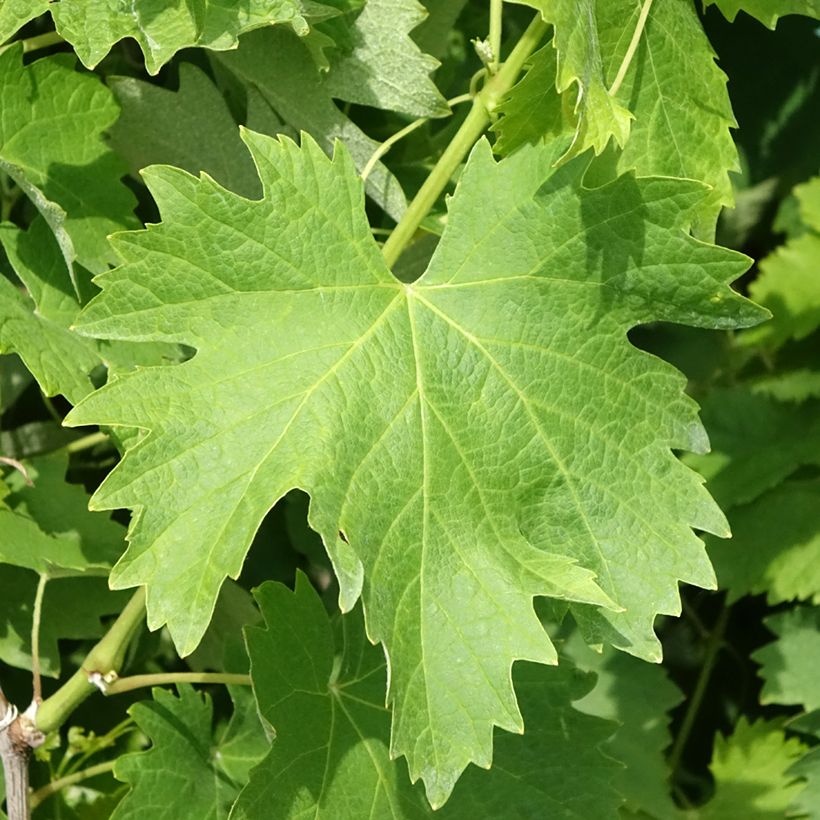

Plant habit
Fruit
Flowering
Foliage
Botanical data
Vitis
vinifera
Vermentino bianco
Vitaceae
Grapevine, Common Grape Vine, European Grape, Wine Grape
Vitis Rolle, Vermentinu, Malvasia, Picabon, Pigato, Favorita, Furmentin, Garbesso, Valentin, Varlentin verlantin
Cultivar or hybrid
Planting and care
Since the ravages of phylloxera at the end of the 19th century, the vine has been grafted onto different rootstocks resistant to this disease and adapted to different types of soil. These rootstocks come from American varieties. Plant the Vermentino Bianco vine in autumn, in deep, well-drained soil, even stony, poor and chalky, dry in summer, in a well-sunny exposure, sheltered from strong winds. Incorporate 3 or 4 handfuls of fertiliser for fruit trees and 2 kg of composted manure into the planting soil for each plant. The roots must not be in contact with the manure. After planting, prune above 2 large buds (buds) to obtain the growth of two branches. Keep the most vigorous one, and tie it to a stake. The pruning will follow.
The vine does not require regular fertiliser application, for good yield, on the contrary. Enrich the soil with potash, crushed horn or iron chelate, only every 2-3 years.
Planting period
Intended location
Care
Planting & care advice
This item has not been reviewed yet - be the first to leave a review about it.
Similar products
Haven't found what you were looking for?
Hardiness is the lowest winter temperature a plant can endure without suffering serious damage or even dying. However, hardiness is affected by location (a sheltered area, such as a patio), protection (winter cover) and soil type (hardiness is improved by well-drained soil).

Photo Sharing Terms & Conditions
In order to encourage gardeners to interact and share their experiences, Promesse de fleurs offers various media enabling content to be uploaded onto its Site - in particular via the ‘Photo sharing’ module.
The User agrees to refrain from:
- Posting any content that is illegal, prejudicial, insulting, racist, inciteful to hatred, revisionist, contrary to public decency, that infringes on privacy or on the privacy rights of third parties, in particular the publicity rights of persons and goods, intellectual property rights, or the right to privacy.
- Submitting content on behalf of a third party;
- Impersonate the identity of a third party and/or publish any personal information about a third party;
In general, the User undertakes to refrain from any unethical behaviour.
All Content (in particular text, comments, files, images, photos, videos, creative works, etc.), which may be subject to property or intellectual property rights, image or other private rights, shall remain the property of the User, subject to the limited rights granted by the terms of the licence granted by Promesse de fleurs as stated below. Users are at liberty to publish or not to publish such Content on the Site, notably via the ‘Photo Sharing’ facility, and accept that this Content shall be made public and freely accessible, notably on the Internet.
Users further acknowledge, undertake to have ,and guarantee that they hold all necessary rights and permissions to publish such material on the Site, in particular with regard to the legislation in force pertaining to any privacy, property, intellectual property, image, or contractual rights, or rights of any other nature. By publishing such Content on the Site, Users acknowledge accepting full liability as publishers of the Content within the meaning of the law, and grant Promesse de fleurs, free of charge, an inclusive, worldwide licence for the said Content for the entire duration of its publication, including all reproduction, representation, up/downloading, displaying, performing, transmission, and storage rights.
Users also grant permission for their name to be linked to the Content and accept that this link may not always be made available.
By engaging in posting material, Users consent to their Content becoming automatically accessible on the Internet, in particular on other sites and/or blogs and/or web pages of the Promesse de fleurs site, including in particular social pages and the Promesse de fleurs catalogue.
Users may secure the removal of entrusted content free of charge by issuing a simple request via our contact form.
The flowering period indicated on our website applies to countries and regions located in USDA zone 8 (France, the United Kingdom, Ireland, the Netherlands, etc.)
It will vary according to where you live:
- In zones 9 to 10 (Italy, Spain, Greece, etc.), flowering will occur about 2 to 4 weeks earlier.
- In zones 6 to 7 (Germany, Poland, Slovenia, and lower mountainous regions), flowering will be delayed by 2 to 3 weeks.
- In zone 5 (Central Europe, Scandinavia), blooming will be delayed by 3 to 5 weeks.
In temperate climates, pruning of spring-flowering shrubs (forsythia, spireas, etc.) should be done just after flowering.
Pruning of summer-flowering shrubs (Indian Lilac, Perovskia, etc.) can be done in winter or spring.
In cold regions as well as with frost-sensitive plants, avoid pruning too early when severe frosts may still occur.
The planting period indicated on our website applies to countries and regions located in USDA zone 8 (France, United Kingdom, Ireland, Netherlands).
It will vary according to where you live:
- In Mediterranean zones (Marseille, Madrid, Milan, etc.), autumn and winter are the best planting periods.
- In continental zones (Strasbourg, Munich, Vienna, etc.), delay planting by 2 to 3 weeks in spring and bring it forward by 2 to 4 weeks in autumn.
- In mountainous regions (the Alps, Pyrenees, Carpathians, etc.), it is best to plant in late spring (May-June) or late summer (August-September).
The harvesting period indicated on our website applies to countries and regions in USDA zone 8 (France, England, Ireland, the Netherlands).
In colder areas (Scandinavia, Poland, Austria...) fruit and vegetable harvests are likely to be delayed by 3-4 weeks.
In warmer areas (Italy, Spain, Greece, etc.), harvesting will probably take place earlier, depending on weather conditions.
The sowing periods indicated on our website apply to countries and regions within USDA Zone 8 (France, UK, Ireland, Netherlands).
In colder areas (Scandinavia, Poland, Austria...), delay any outdoor sowing by 3-4 weeks, or sow under glass.
In warmer climes (Italy, Spain, Greece, etc.), bring outdoor sowing forward by a few weeks.






























